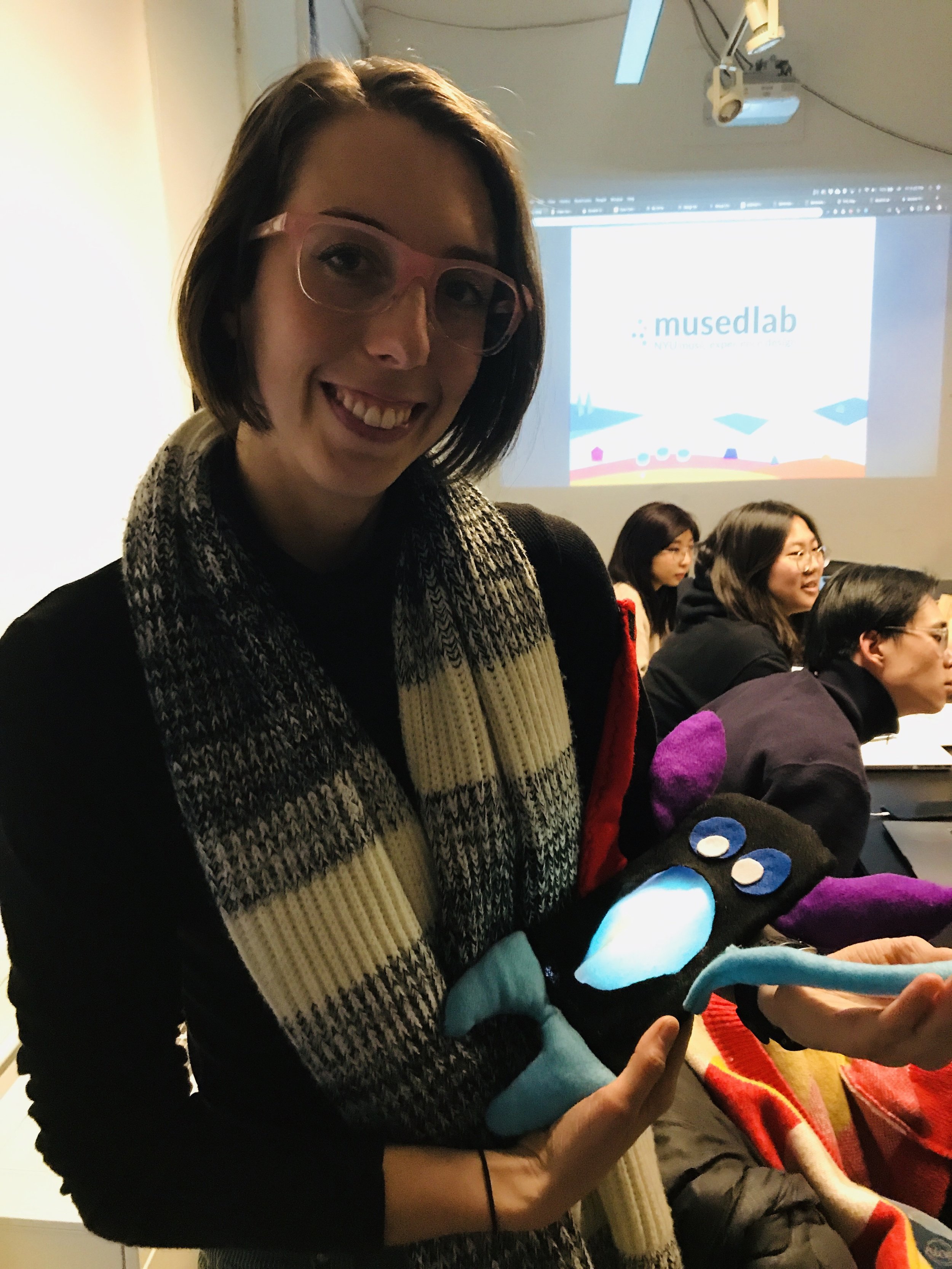For the Lo-Fi Toy Prototype ( originally posted by Lydia ) we were asked to present in class and document the feedback received during the demonstration. The plan was originally to test with kids however we did the test with the host professor Alex, who came to our class and reviewed our ideas.
Team members: Lydia, Veronica, Arnab.
Our toy consists on a sound collector companion that the kid can take around in order to collect sounds and interact with the visualizations that happen in the belly, that are going to be affected by the kind of sounds that are being collected. The main purpose of the user testing was to understand if kids are interested in collecting an input (sound in this case) and having the toy displaying it in a different output (visuals/ colors).
We had to explain all of our thought process, starting by the ideation and also how our fabrication and coding processes affected the final result of the prototype. The next step was to make a demo with the toy functionalities. Our hypothesis was that the users were going to hold the toy and walk around collecting different sounds, however we realized that they stayed in only one place, probably because the toy was not intuitive enough about the change in the visualization according to the pitch of the sound.
This was our first and very valuable observation because it did’t depend on what users told us, but instead in what we observed during the testing period. The users started making weird sound and clapping to the toy to try to identify what was causing the change in the patterns and colors. We immediately noticed that the users in the class knew about programming so they were probably trying to identify which sound parameters we used to map the output in the visualization.
Having noticed that our audience wasn’t going to give us the feedback that we expected from kids, we decided to start asking for more design/interaction focussed feedback. In that moment we started receiving very interesting ideas surrounding our original proposal but augmenting the “storytelling” around the interaction.
We received the very interesting feedback to create a Science Companion that helps the kid to collect temperature, environmental data, rocks, etc. With that data provide the kid with the possibility to do a palette of the collection that can be later used to create different outputs.
Example: The Science companion helps the kid to collect rocks, the kid create a palette of rocks that can be later used in order to create a brand new rock.
We intend to incorporate some of this feedback, we are still missing the very important factor of testing with kids and understanding if they find this change between input/output by exploring their environment interesting and playful in the same way that we are imagining.
For our next steps, we took a pattern making class in order to remake the toy in a more three-dimensional shape that will look more polished, we also decided to provide the kid with the possibility of using the companion as a Fanny bag, therefore we will have to work on adjustable straps. In the coding and interaction we are planning on exploring more obvious ways to generate the change between the input and the output in order to motivate the kids to move and collect more variety of sounds.





